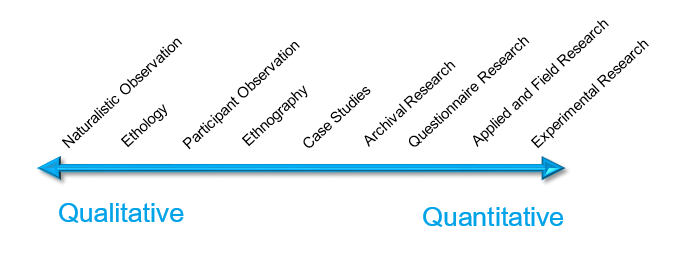
In this section, you will find information about academic fields of study (or disciplines). A discipline or field of study is a branch of knowledge that is taught and researched in higher education. These different fields of study hold different values and frequently require different approaches when reading, understanding, and interpreting information. The box below will provide a short introduction to three different disciplines: humanities, natural sciences, and social sciences.
The humanities discipline includes (but is not limited to) the following fields of study:
Research in the humanities is often quite different than research in the natural and social sciences. In the humanities, you may see different approaches to arguments, but they tend to rely on qualitative research. What is considered evidence may vary from project to project. This could include opinions and arguments from others scholars, historical and cultural documents and records, literary texts and biographical information, and even images and sound bites.
The natural sciences discipline includes (but is not limited to) the following fields of study:
These fields can include more specific fields, such as botany, zoology, geology, climate science, and astronomy. In the natural sciences, researchers will gather a variety of evidence, data, and information from a variety of sources. You may frequently see reference to questionnaires, applied and field research, experimental research, and longitudinal studies.
Questionnaires
Participants are asked a pre-selected set of questions. These questions may be delivered in writing or through an interview format.
There are three main types of questionnaire methods: Random Sampling, Stratified Sampling, and Convenience Sampling.
Applied and Field research
Studies undertaken primarily to find a solution to an immediate, practical problem, such as reducing drug use or increasing worker productivity.
Field research is a type of applied research that is undertaken in a non-laboratory setting, such as a hospital or workplace.
Experimental Research
Controlled research undertaken in a laboratory or other controlled environment. Data collected can be analyzed to test a hypothesis.
Longitudinal Studies
The experimenters follow the same group of participants over the course of many years. This is common in medical research.
The social sciences discipline includes (but is not limited to) the following fields of study:
In the social sciences, researchers will gather a variety of evidence, data, and information from a variety of sources. You may frequently see reference to observational studies, case studies, archival research, and questionnaires.
Observational Studies
The researchers record data and information by studying participants without influencing them or their actions.
Types of observational studies include: Naturalistic Observation, Participant Observation, or Ethnography.
Case Studies
The researcher will collect and write detailed histories and descriptive accounts of individual lives. A case study can combine a few research approaches, including interviews, observational data, and archival data.
Examples of Case Studies include Freud's history of Anna Olink, and the stories related in Oliver Sacks's best selling book The Man Who Mistook his Wife for a Hat.
Archival Research
A researcher analyzes and interprets data that has already been collected, often for an unrelated purpose, in order to answer their research question.
Typical sources of archival data include: census data, court records, medical records, and even case files from other researchers.
Questionnaires
Participants are asked a pre-selected set of questions. These questions may be delivered in writing or through an interview format.
There are three main types of questionnaire methods: Random Sampling, Stratified Sampling, and Convenience Sampling.
Most Research is categorized into two general methods:
 Qualitative Research
Qualitative Research
Non-numerical evidence, usually examined in its raw form
Used when a researcher wants to understand people's opinions, idiosyncratic responses to an event, motivations, or underlying reasons for actions or decisions.
link will open in a new window
Example: Interviewing the victims of a natural disaster to gather a range of emotional responses.
 Quantitative Research
Quantitative Research
Numbers! Collected as numerical data or converted into numerical data and examined using statistical methods of analysis.
Used to examine trends and compare populations.
link will open in a new window
Example: Asking victims of a natural disaster to rank their feelings of anxiety using a pre-determined scale.
The Research Continuum
